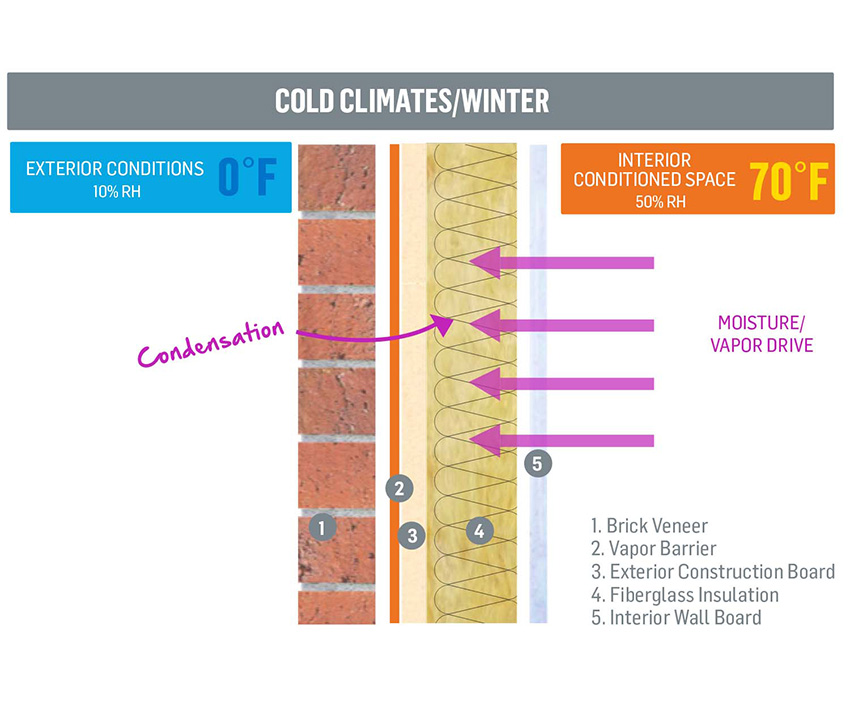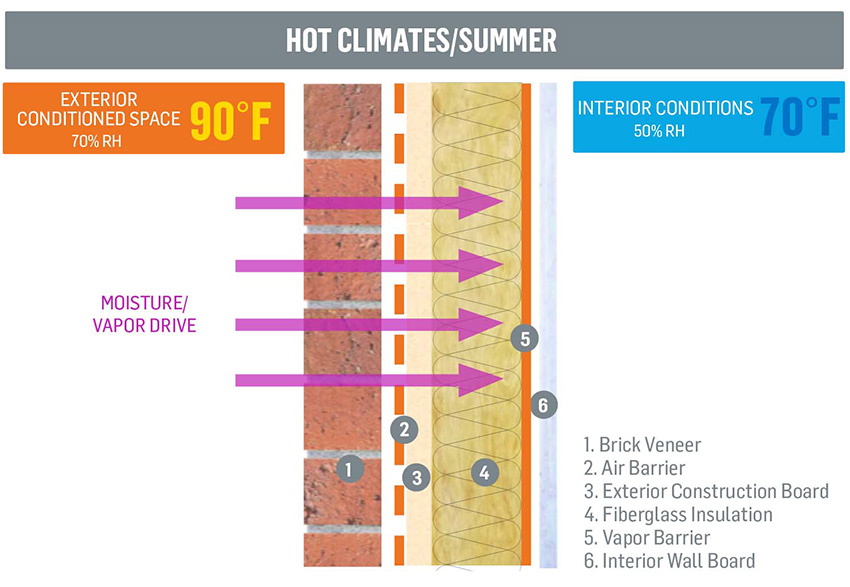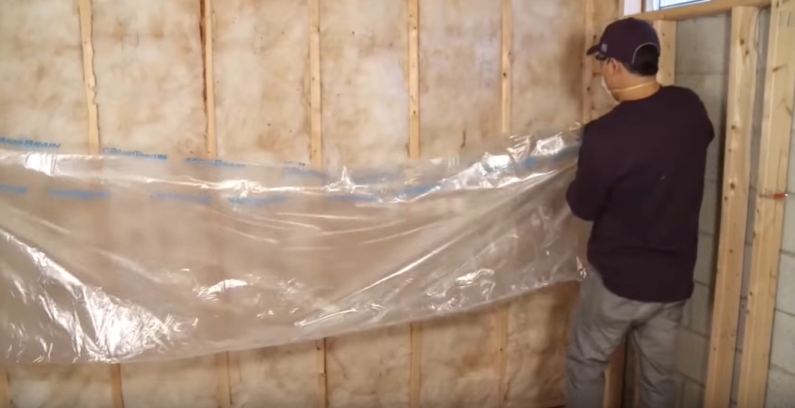Insulation
The purpose of insulation is:
- to keep moisture out and prevent mold / mildew inside a structure.
- to keep the inside temperature constant in both winter (cold) and summer (hot)
There are a number of distinct components that go into wall / roof cladding:
- cladding
- vapor barrier
- insulation
- air gap
To add to the confusion, here are some more terms you may come across:
- vapor permeable
- moisture barrier
To clarify some of the confusion: ‘moisture’ is the same as ‘vapor. So a ‘moisture barrier’ by definition is not vapor permeable. Why does this matter? As soon as you introduce a non-vapor permeable material, you will get condensation to form on its surface. Depending on whether it is summer or winter, whether or not you have an air-conditioning unit running, whether or not you have a heater running, moisture will condensate on the inside / outside of a non-vapor permeable material. This is why you will need an airgap between materials.
The vapor barrier (no.5) is often clear polyethylene plastic film. There are concerns in modern structures moisture will be trapped in the fiberglass insulation if there is no airgap (stud wall) in between these materials.
Airgap
Irrespective of the climate or season you are in, hot air (= air in a hot temperature area) is less dense than cold air (air in a cold temperature area). Hot air rises and cold air falls. Air will move from hot to cold. In doing so, if this hot air comes across a non-vapor permeable material that is colder than the air, the air will cool down and the moisture in the vapor will condensate as a liquid onto the non-vapor permeable material. If the material is vapor permeable there would be no condensation, but also no blocking of moisture.
Insulation
Rockwool and fibreglass (glasswool) insulation is vapor permeable. Often one side has a sheet of plastic / paper glued to it as a vapor barrier. Fibreglass (pink batts) are branded “Earthwool” which is remarkably similar to rock wool / mineral wool, but it is actually glasswool. “made from up to 80% recycled bottles”. The material is no longer dyed and uses a bio-based binder instead of formaldehyde. It now looks similar to rock wool. Can’t get rockwool at Bunnings so got Earthwool for sound dampening an internal wall. Should have used foam, but foam is a lot more expensive. Sound dampening is fine; not trying to sound proof.
For reflecting the western sun off a wall, Reflectacell and Ametalin are preferred. Reflectacell and Ametalin are aluminium reflective film coated foam that is non-vapor permeable and acts as a thermal break. Reflectacell and Ametalin can be fixed directly touching Colorbond metal cladding but will need an airgap on the other side. It is best installed in between wall / roof Colorbond cladding and the frame during construction. I removed some wall sheets partially and put this on western wall.
R value
Just as important as insulation value (R value) of a material, is to seal any gaps. Often, if you apply materials after wall / roof cladding has been installed you will need aluminium jointing tape to seal any gaps around horizontal purlins or vertical wall studs for the insulation to be effective.
Ventilation
Insulation may trap moisture inside in winter. It is important to ventilate in winter (or run a heater to dry out the air / walls / ceiling space) if you heavily insulate your walls / roof.
Final purchase
ThermalBreak™ consists of a 7.8 mm core of chemically cross-linked, closed-cell XPE foam, one-layer of aluminium is laminated to one side with emissivity of 0.03 and onelayer of polymer weave to other side with emissivity of 0.05.”. Note: also comes in a 1500mm wide roll that is 4mm thick.


